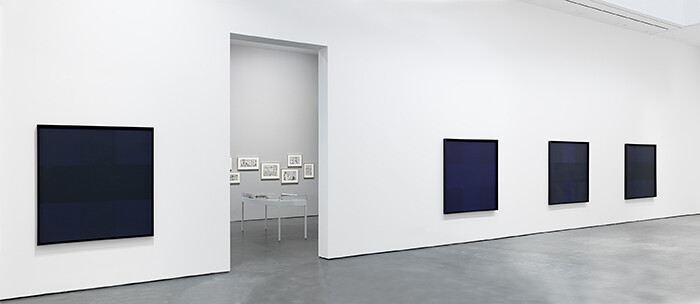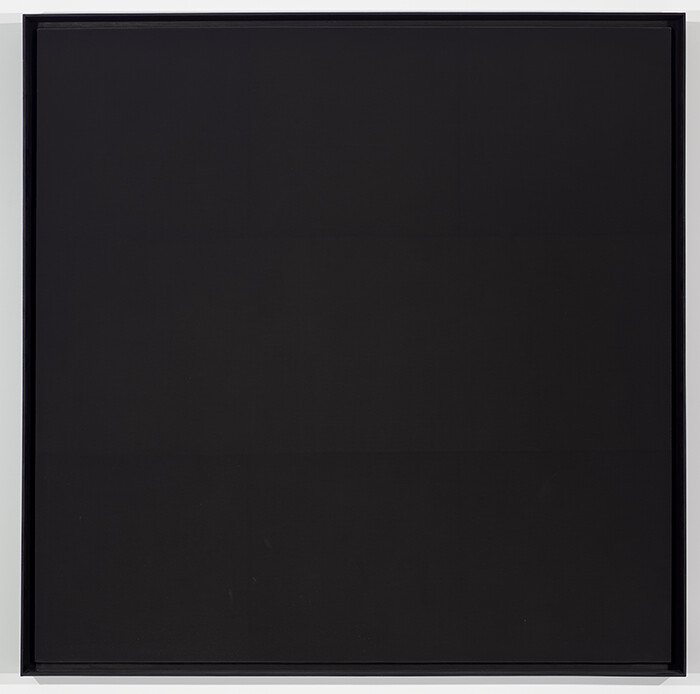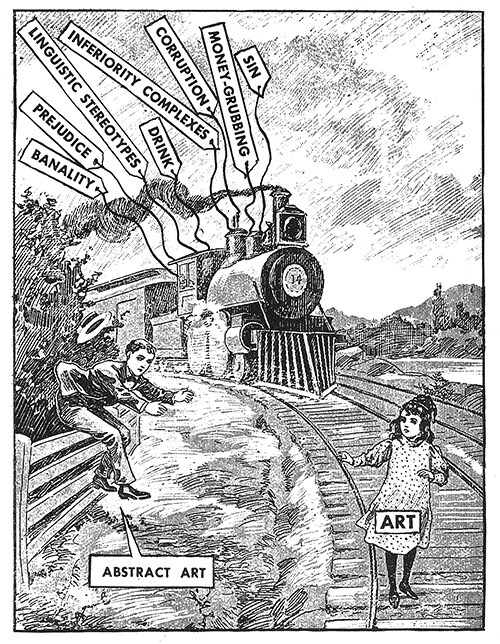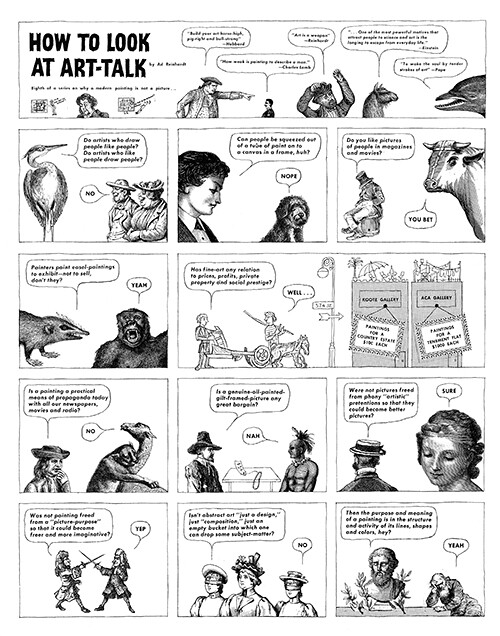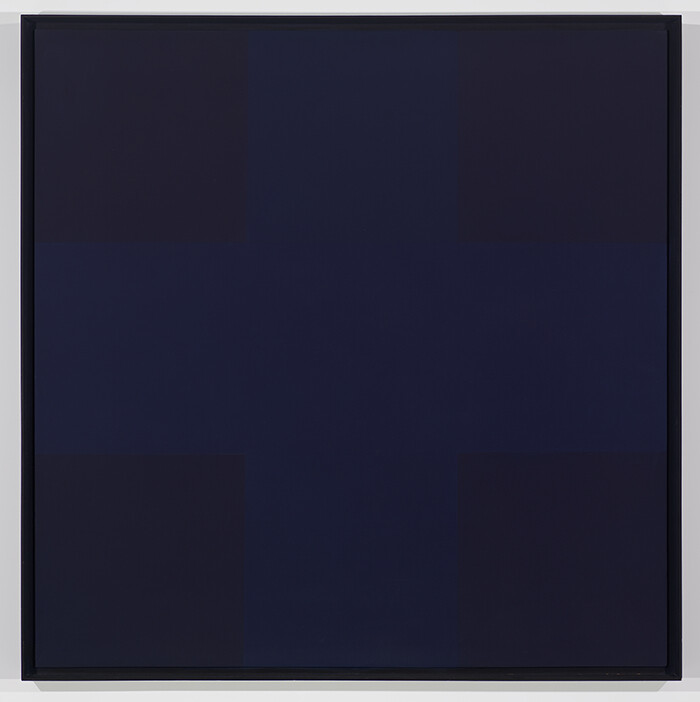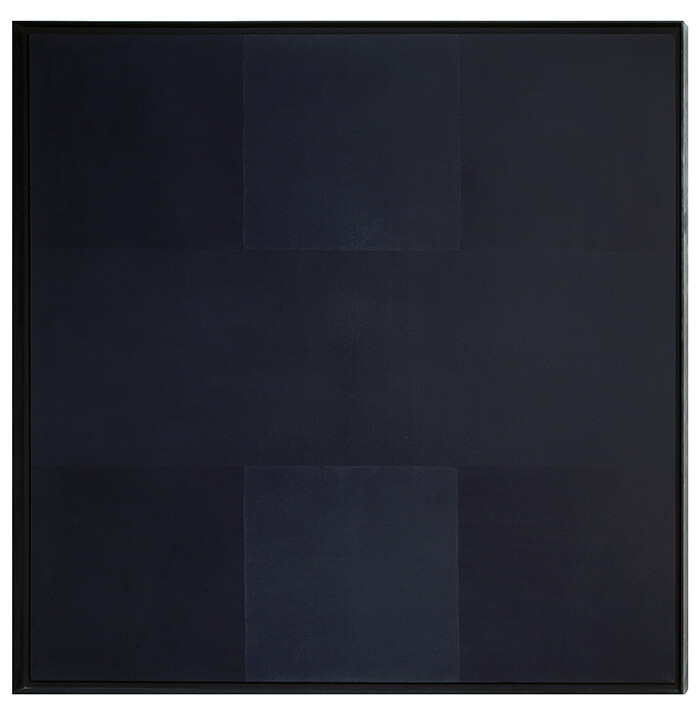November 7–December 18, 2013
For an artist perhaps most famous for his “black” paintings—some of the most visually obdurate work ever produced on canvas—Ad Reinhardt (1913–1967) spent much of his life taking great pleasure in images. The current show of his work at David Zwirner, which now represents the Reinhardt estate, reveals yet another mid-century abstract artist with deep roots not only in figuration and illustration, but in New Deal-era progressive politics as well—the art history that textbooks and classrooms continue to relegate to the dustbin. Exhibition curator Robert Storr has selected more than two hundred original small cartoons Reinhardt drew while working full-time for the leftist magazine PM from 1942–47 (except for a two-year stint in the U.S. Navy). Topics range from domestic politics to the economy (one example—even more relevant today—features a hot air balloon with the word “salaries” on it being set aloft, while another with the word “wages” remains tethered to the ground), to international concerns (a caricatured Hitler features in a number of them), to gender and race relations. Despite these serious issues, humor abounds in both images and text, and it isn’t a stretch to make a visual connection between the cartoons’ inked black suits and the much more famous—and resolutely anti-figurative work—in the next room.
Humor is equally prevalent in Reinhardt’s larger illustrations on display. Expanding on Alfred Barr’s famous 1936 genealogical chart of modern art, Reinhardt created a couple of his own versions drawn as more inclusive trees. Much of this cluster of work is educational in its intent, including twenty-two pages from PM magazine featuring Reinhardt’s “how to” series, including “How to Look at a Cubist Painting,” “How to Look at Low (Surrealist) Art,” and “How to Look at Looking” (all from 1946). Tongue in cheek, yet never condescending, these were meant for a general readership. The only significant art-world satire is directed toward the “artist as a company man,” or the artist as sellout. In between these various illustrations and the cartoons in this first gallery are two vitrines with supplementary archival material: book and magazine covers by Reinhardt going back to his undergraduate days at Columbia University, a sketch he made outlining part of his extensive travels, a few notebook pages, a handful of cartoons that Reinhardt preserved from publications such as The New Yorker and the Wall Street Journal in which his “black” paintings are gently teased, and more.
Reinhardt’s political cartoons, drawings, and collages are not unknown, but to see them presented here so cleanly and precisely edited, and with a new catalog accompanying them, is a revelation. So, too, is a slideshow featuring a selection of the more than 12,000 photographs Reinhardt took during trips to different countries and regions, and to which he added images from books and magazines. Here viewers get a clearer sense of Reinhardt’s formalist side because the photographs are sequenced by pattern and shape, whether it’s a string of pictures taken through arched doorways, or multifarious dual apertures that resemble a pair of eyes, or even a succession of curved buttocks. Digitally projected in a dark gallery, the images flash by fairly rapidly, although Reinhardt used to show his slide versions with running commentary in various informal settings with the descriptor “non-happenings.” The carefully composed photographs are global in scope and depict art and architecture in every imaginable form, ranging from the ancient to the modern.
And then there are the “black” paintings in all of their anti-heroic glory. Thirteen of them are on display, the most ever shown in one place, on loan from private and museum collections in the United States (along with one from Korea), and dated between 1960 and 1966 (Reinhardt started the series in 1951 and he worked on it until a year before he died). They all share the same title, Abstract Painting, and are each 60 x 60 inches. The works are famously not “black,” but black with faint bands of blue, and organized according to a six-part cruciform grid that evokes Kazimir Malevich far more than the iconography of Christianity or any other religion. For all of their intentional self-containedness, they rank among the least reproducible paintings ever, a bit less for the subtle color patterns and more because of Reinhardt’s painstaking elimination of brushstrokes. Unfortunately, the gallery put a low rope too far in front of the paintings for viewers to comprehend fully their material surfaces or appreciate the way the paintings’ matte finish firmly parries the expressionism in his fellow abstractionists’ art. I found myself shielding my eyes from the overhead lights in order to get a better view of the paintings, which absorb light while simultaneously seeming to emit it. They visually pulse; the blacks and blues trade places while the human eye adapts, and then re-adapts to an art in perpetual static motion. Whether formal-aesthetic or historical, this interplay of difference and the same resonated throughout almost every aspect of the exhibition.

